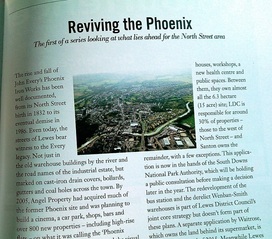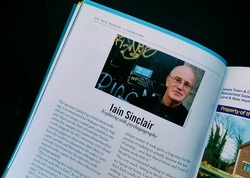
The rise and fall of John Every’s Phoenix Iron Works has been well documented, from its North Street birth in 1832 to its eventual demise in 1986. Even today, the streets of Lewes bear witness to the Every legacy. Not just in the old warehouse buildings by the river and the road names of the industrial estate, but marked on cast-iron drain covers, bollards, gutters and coal holes across the town.
By 2005, Angel Property had acquired much of the former Phoenix site and was planning to build a cinema, a car park, shops, bars and over 800 new properties – including high-rise flats – on what it was calling the ‘Phoenix Quarter’. Revised plans later reduced the visual impact of the development, but little progress was ever seen because Angel Property went into administration in 2009. Yet the property crash that claimed Angel wasn’t bad news for everyone. Angel’s reported £27 million investment became a bargain buy for the Santon Group and investment business MAS, which apparently paid significantly less for the site in 2012. As well as submitting new plans for the area, they’re proposing a new name: the ‘North Street Quarter’. Since then, consultations have been held, opinions have been gathered and campaigns have been waged.
Which brings us to today. Or, more correctly, to the middle of March, when Lewes District Council (LDC) and Santon North Street Ltd jointly submitted a planning application that included 416 houses, workshops, a new health centre and public spaces. Between them, they own almost all the 6.3 hectare (15 acre) site; LDC is responsible for around 30% of properties – those to the west of North Street – and Santon owns the remainder, with a few exceptions. This application is now in the hands of the South Downs National Park Authority, which will be holding a public consultation before making a decision later in the year.
The redevelopment of the bus station and the derelict Wenban-Smith warehouses is part of Lewes District Council’s joint core strategy but doesn’t form part of these plans. A separate application by Waitrose, which owns the land behind its supermarket, is expected by the end of 2015.
Meanwhile Lewes Phoenix Rising Ltd, a community development company set up last year, is raising £20,000 to submit its own plan for 3.5 acres of the site. Although it doesn’t own the land, it wants to propose “an exemplary scheme” to be considered alongside the Santon/LDC submission. Instead of demolishing all the old warehouses, it’s suggesting 48 rental homes along with work and social enterprise space within renovated Phoenix Ironworks buildings.
In the next few months we’ll be taking a closer look at the area, the planned North Street Quarter development and the alternatives that are being proposed. We’ve already spent time with Lewes District Council and Santon – there’ll be more details of that conversation in next month’s magazine – and look forward to talking to other interested parties.
First published in Viva Lewes magazine issue 103 April 2015.

 RSS Feed
RSS Feed
